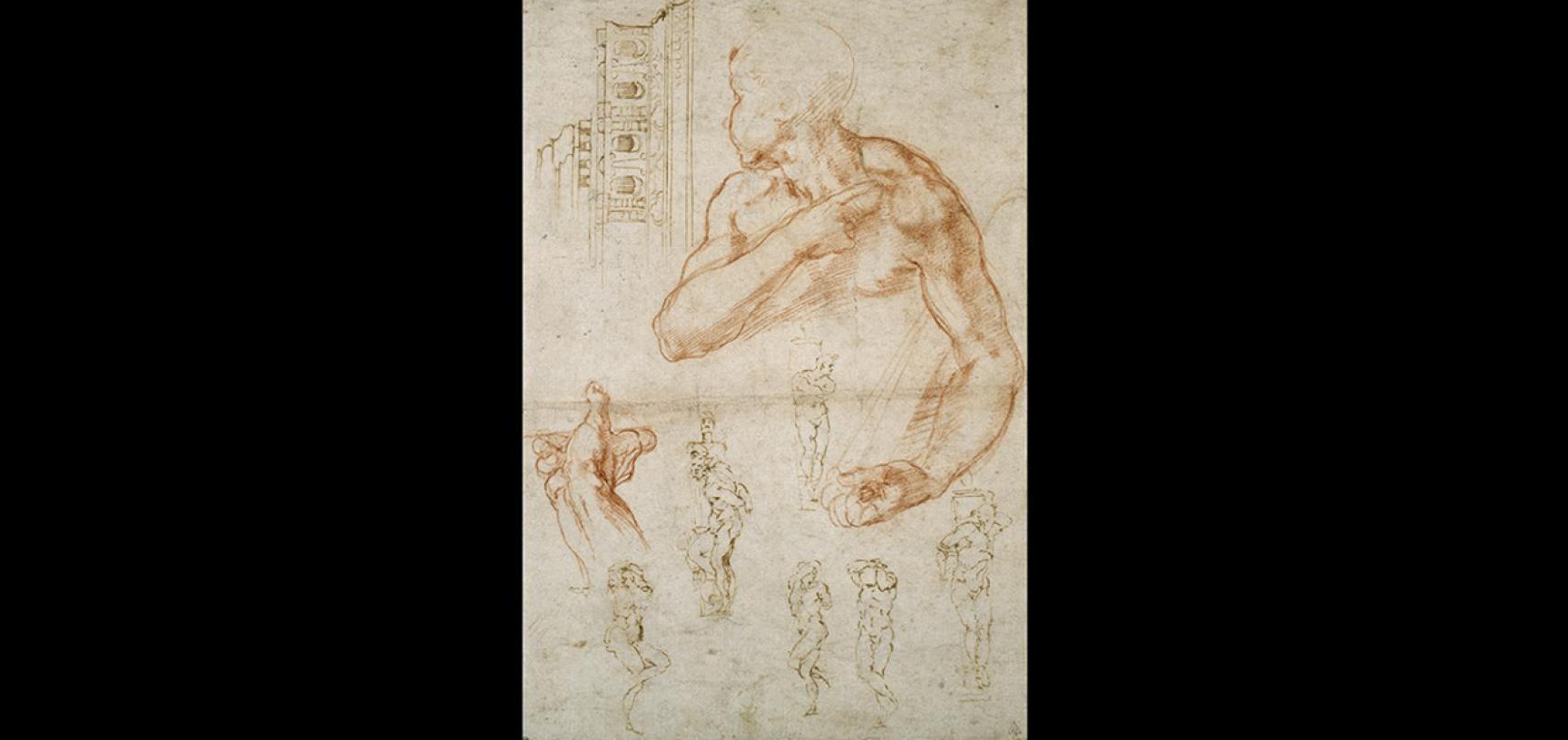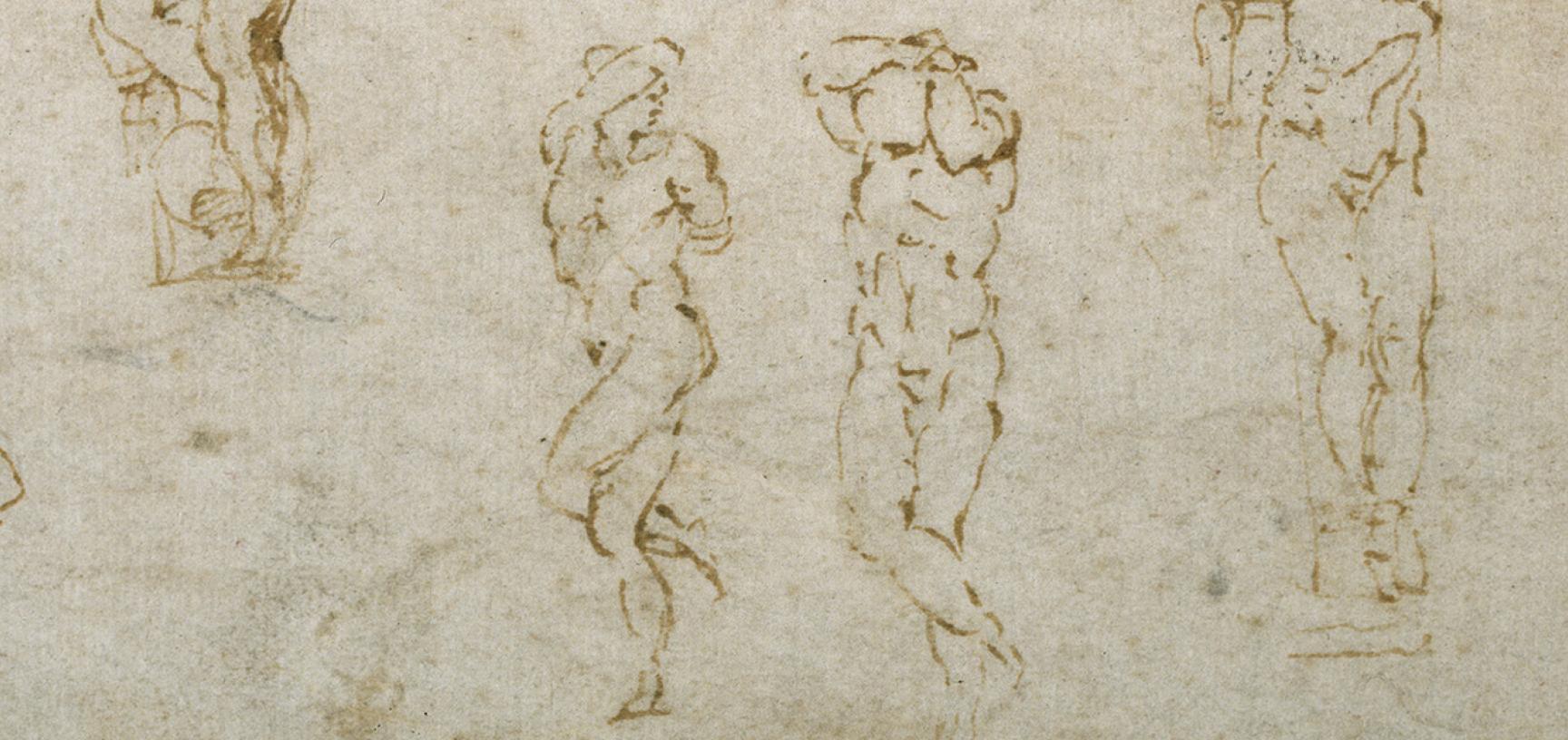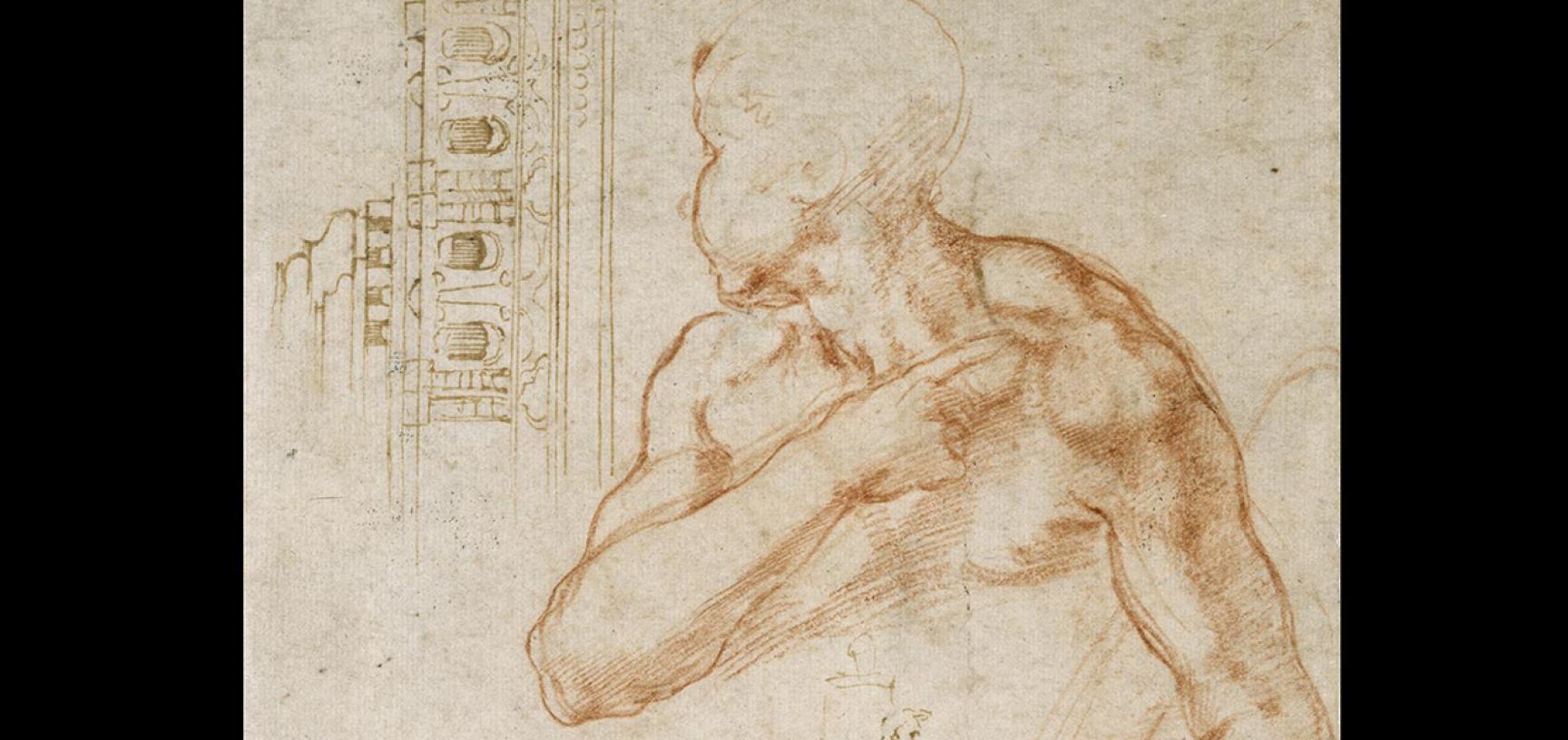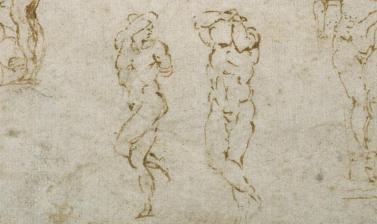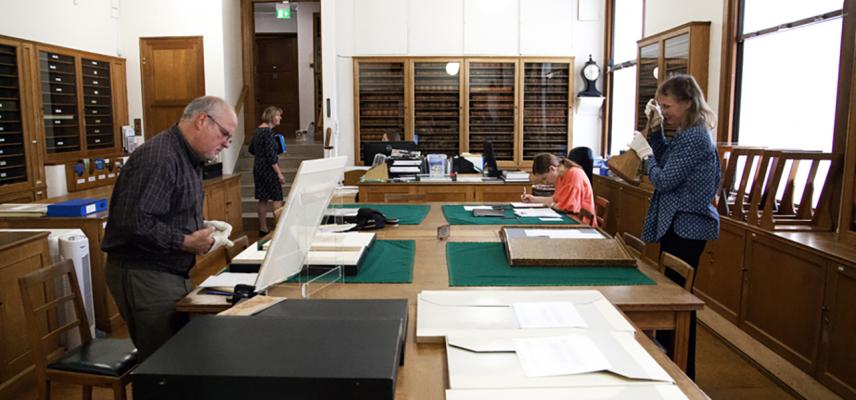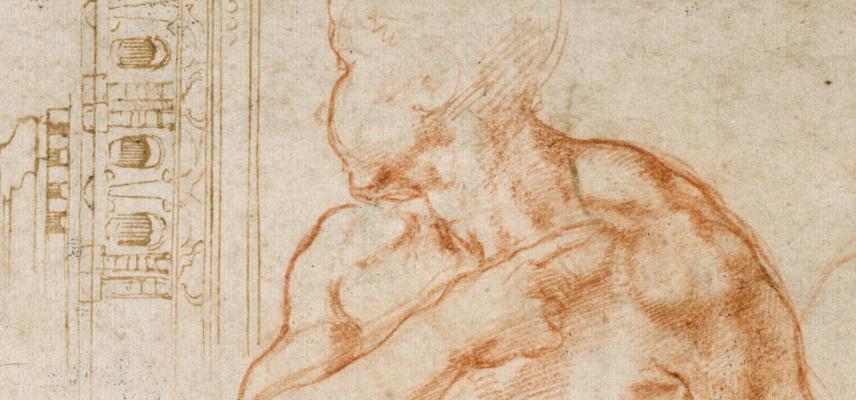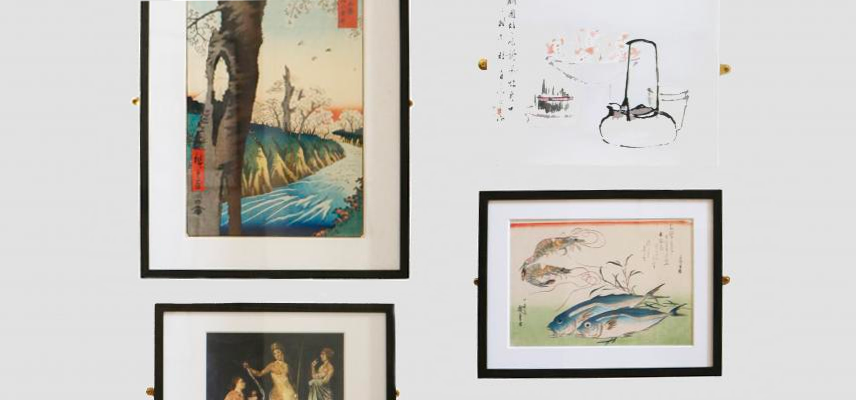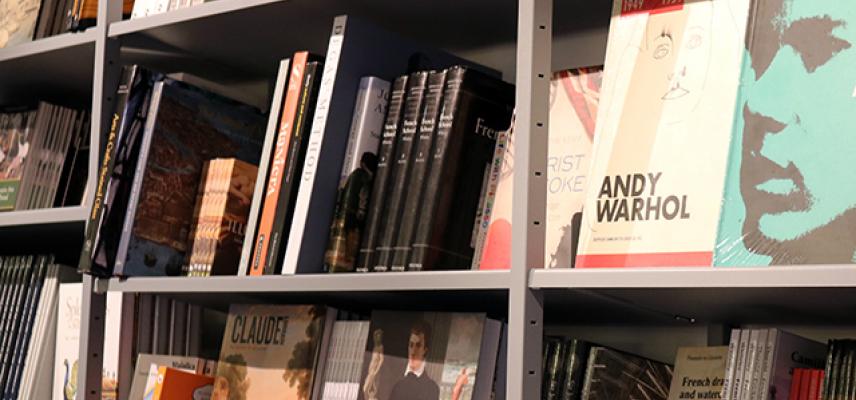MICHELANGELO'S STUDIES
For the Sistine Chapel and a papal tomb
Michelangelo Buonarroti was the first artist recognised by contemporaries as a genius. He was born in Caprese in the 1470s and trained first as a painter and then as a sculptor. In 1496, already known as sculptor, he went to Rome where he carved the Pietà for St Peter's. Back in Florence in 1501 he began work on many projects, most of which were left unfinished in 1505 when he returned to Rome to begin work on the two projects explored on this sheet.

The red chalk studies relate to his work in the Sistine Chapel in 1511–12. The largest study is for the figure of a boy who points towards the Libyan Sibyl (Priestess), and the other is for the Sibyl’s right hand holding an open book. The red chalk beautifully shows the warmth and softness of flesh. Michelangelo lightly sketched the boy’s head, then with a variety of strokes defined the muscles and the effects of light and shade as the boy turns, holding a scroll under his arm.
The six smaller twisting male figures are actually sketches for another work of his, the tomb of Pope Julius II. With quick pen strokes, he created a sense of energy and movement. After the pope's death in 1513, the scale of the project was gradually reduced until a much simpler wall tomb with fewer figures than originally planned was completed in 1545.
Image: A detail of the Libyan Sibyl from the Sistine Chapel
Michelangelo Buonarroti (1475–1564)
c.1511–13
red chalk on with pen and brownish ink on off-white paper
28.6 x 19.4 cm
Presented by a body of subscribers, 1846
View on our online Collection Online Site: WA1846.43
License this image - visit the Ashmolean Image Library


